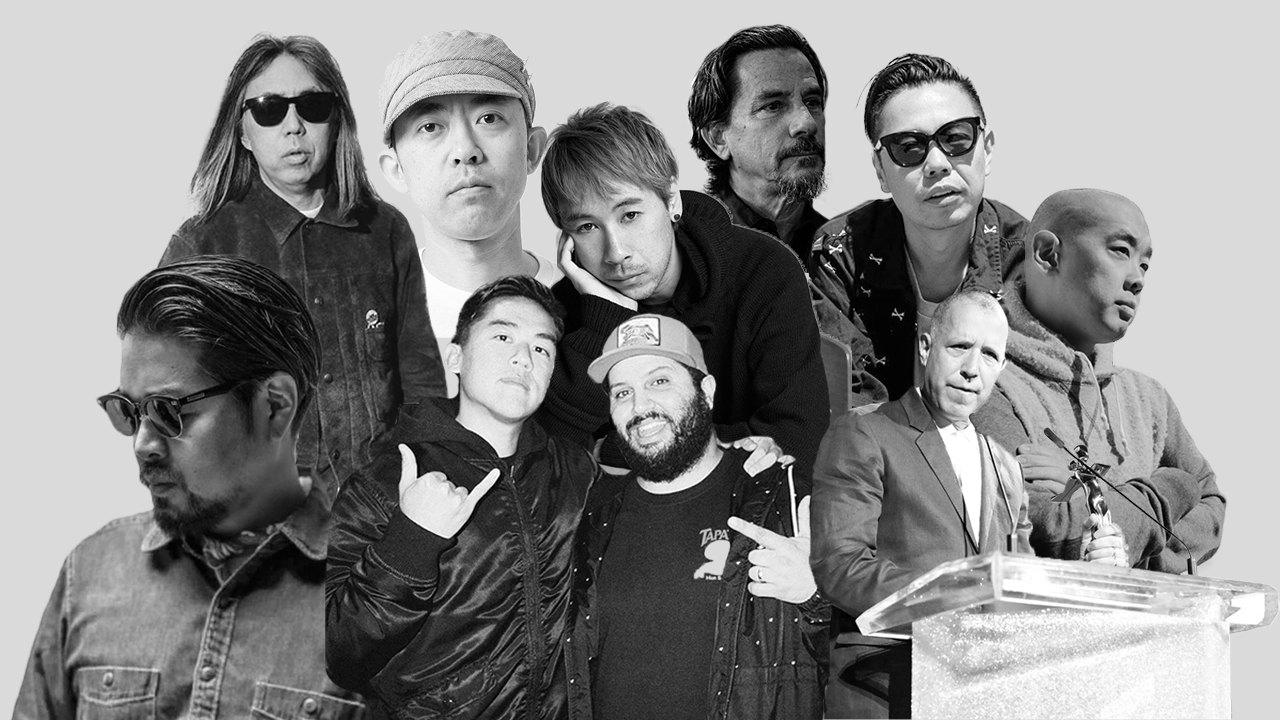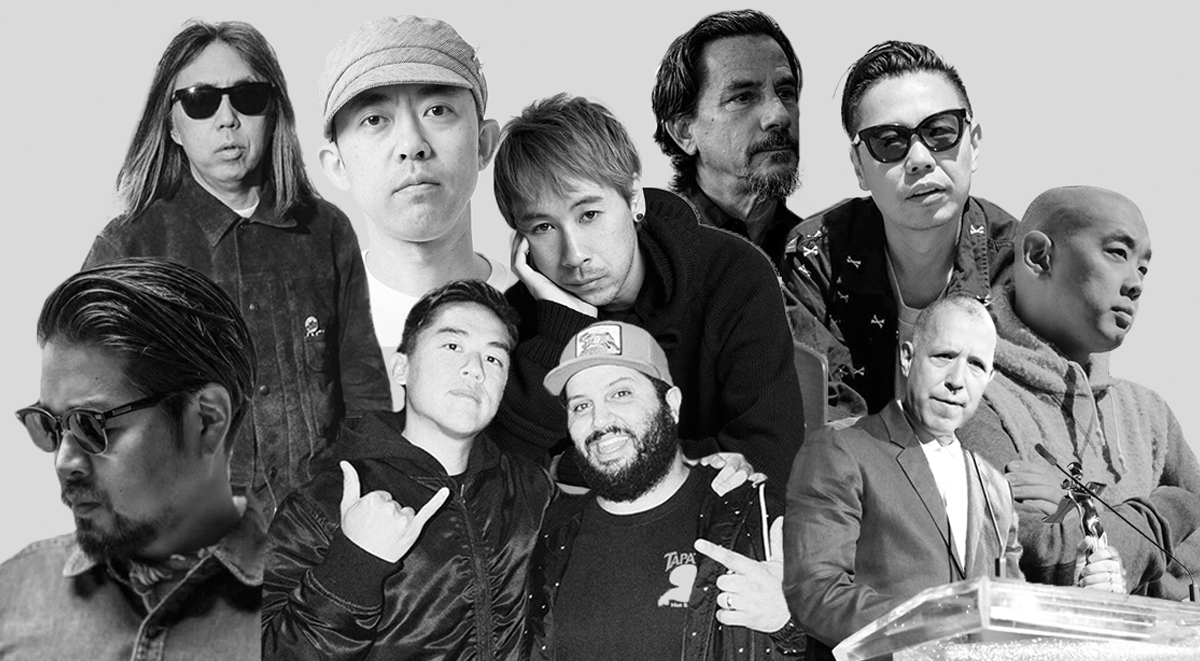





His highly exclusive retail strategy, which saw new releases dropped in super limited quantities but at affordable prices, led to Supreme developing a cult following that would pay astronomical amounts on the secondary market to own all of their most limited releases. This pushed many streetwear heads to partake in resell culture, turning it into a US$6 billion market.
In 2017, Supreme announced that they were going to collaborate with Louis Vuitton, then under the helm of Kim Jones. The massive success of the collaboration, which contributed a 23% growth in profit for Louis Vuitton in the first half of 2017, and the launch of Supreme’s first European store in London showed the high fashion world that the streetwear brand with its humble beginnings a force to be reckoned with.
Fujiwara started experimenting with streetwear in the ‘80s, then closely associated with the Harajuku scene. By then he had built a reputation for being able to connect the dots between different art forms and global fashion sensibilities, which led to his creation of a distinct style that merged London punk fashion with American hip hop culture.
In 1990, Fujiawara established the brand Goodenough and in 1993, he started Nowhere with Nigo . Nowhere quickly became the hotbed of Japanese streetwear, nurturing the launch of A Bathing Ape, WTAPS, Neighborhood, Sophnet, and others to come. If you love Japanese streetwear and any of the brands listed above, credit goes to Fujiwara.
Power collaborations: Fragment and Undercover put their spin on the LDWaffle
When you think of Japanese streetwear, Bape is probably one of the first brands to pop up in your mind. Short for A Bathing Ape, Bape was one of the first Japanese labels to successfully create a fan base in the US. Their combination of bold colors and camo prints took the American streetwear scene by storm and for most of the late ‘90s to early 2000s, was one of the most desirable Japanese labels.
Bape’s history goes something like this: Nigo first got his start with the label Nowhere in 1993, a collaborative effort with the designer Jun Takahashi (more on him further down this article) that was supported by Hiroshi Fujiwara (mentioned above). It was also during this time that Nigo and frequent collaborator and renowned streetwear artist SK8THING came up with the idea for Bape, which was originally called A Bathing Ape in Lukewarm Water (a metaphor for overindulgence and a critique on the laziness of the new generations). Though Nigo had to sell off the label due to financial hardship in 2011, there is no denying his impact on modern streetwear and continued influence through his label Human Made, established in 2010.
Everything we know about streetwear was first tried and tested by Shawn Stussy. Stussy got his head start by creating custom surfboards that merged reggae culture and new wave graphics with experimental shapes in 1979. At that time, he began selling t-shirts that offered a simpler alternative to the busier surfer tees of the era. His uncanny ability to connect the different cultures he was immersed in to create cohesive collections would continue for the next few decades and set Stussy apart.
One of the things Stussy was known for was its bootlegging of luxury brand logos – putting a spin on them to create unique graphics applied to Stussy tees. This garnered a lot of attention from both the public and Louis Vuitton’s legal team, which sued Stussy (along with Supreme) for using their monogram in their graphic tees.
In the 1990s, in order to build a global following, Stussy formed a network of international collaborators who could stock, sell and eventually design for Stussy collections. Known as The Tribe, the collective included icons like Hiroshi Fujiwara, skater Jules Gayton and the founder of Slam Jam, Luca Benini. This model of operating a streetwear label didn’t exist before Stussy and it soon became the template for generations of streetwear labels to come.
Based out of Los Angeles, The Hundreds, founded by Bobby and Ben Hundreds, is more than just a streetwear label and store. The Hundreds’ success can be credited to the community it built and becoming a platform for emerging talent and independent labels to be seen and heard through collaborations with The Hundreds.
This welcoming approach influenced other aspects of the business. For instance, The Hundreds wanted to change the cold approach of more established streetwear brands like Supreme by having friendlier employees in stores that also boasted homely interior design. Their first store, which opened in Los Angeles in 2007, became an incubator for future style icons and influencers such as Jonah Hill, Kid Cudi and Tyler, the Creator.
Having been a part of the rise of streetwear in the early 2000s, The Hundreds’ blog also served as an archive and an excellent point of education. Outside of sharing the latest streetwear collection or reporting major launch parties, the blog also covered social causes and issues of the day. Where possible, The Hundreds would leverage their creations to amplify unheard voices. A prime example would be their first runway in 2019, designed in collaboration with indigenous-owned brand Obsidian. They took the opportunity to highlight the work of the front line protestors against the construction of the Dakota Access pipeline, which had a negative impact on the environment and to sites sacred to Native Americans.
When Jeff Staple started Staple Pigeon in 1997, all he wanted was to turn his works of art into silkscreen prints that anyone could rock. “Hanging this [graphic design] is cool but no one was going to my apartment…but on a t-shirt, when I am on a bus or subway, mad people get to see my message,” said Jeff in an interview with Karmaloop TV. And the message about perseverance and grit symbolized by the pigeon resonated with urban dwellers,
By 2002, Jeff expanded his business to include Reed Space. The first of its kind and considered experimental at the time, Reed Space was a lifestyle store for everything from homeware, apparel, sneakers and more in a single store. Reed Space became a sort of arbiter of taste that would give emerging brands the leg-up it needed if it was stocked at the lifestyle store, alongside Staple Pigeon’s sought-after goods. ,
In 2005, Nike approached Jeff to create a Nike Dunk Low that would represent New York City. Only 150 pairs of the sneakers were made and distributed among five stores in NYC. Over 150 people queued for the drop at Reed Space alone and the NYPD was called in to manage the crowds at the various drop sites. By the end of the day, over 20 people had been arrested for trying to rob those who managed to get their hands on the sneakers. Needless to say, this drop made it to the front page news.
WTAPS is to Japan what Supreme is to New York. Established by Tetsu Nishiyama in 1997, WTAPS was one of the last few notable brands to emerge from Japan in the ‘90s. Initially, Nishiyama solely focused on his first label Forty Percent Against Rights (FPAR), which turned political slogans into wearable garments. In 1997, he channeled that rebellious energy into WTAPS, creating guerilla military-infused streetwear. The WTAPS launch was nothing short of a success and solidified its status through collaborations with Bape and Undercover.
Unlike their peers, WTAPS didn’t focus on global expansion. Instead, they remained a small enterprise, choosing to channel their creative energies to create high quality collections that reflected the preferences of Japanese youth. This created a strong domestic following that wanted to own every piece they created. Even with all their commercial success, WTAPS opened their first and only flagship store to date in 2011, from where they continue to pump out collections in very limited batches that sell out quickly.
Shinsuke Takizawa’s entire fashion career began with a single trip to the United Kingdom in the ‘80s. Already passionate about fashion, Takizawa fully immersed himself in the British punk scene. Upon his return to Japan, Takizawa continued to seek out the club and nightlife scene he experienced in the UK, which eventually led him to Hiroshi Fujiwara. He worked under Fujiwara’s label Major Force for eight years as part of the design department.
Through interactions with Fujiwara’s network, which included the founders of Undercover, Bape and WTAPS, Takizawa would set up and launch his own label, Neighborhood in 1997. Originally the store primarily stocked other brands and a few imported American apparel. Takizawa soon decided to create full collections released under the Neighborhood brand inspired by his love for punk and motorcycle culture.
But it was really Neighborhood’s collaboration with Supreme in 2006. That elevated the brand’s status globally. Neighborhood has walked the path less traveled, choosing to release collections that are thematic rather than seasonal. This was a reflection of Takizawa’ growth as a designer and his exploration of other forms of streetwear. In turn, his creations often reflected the changing palette of the streetwear scene and kept Neighborhood relevant for decades.
Jun Takahashi is unlike any other within the Japanese streetwear space. As the creative mind behind Undercover, Takahashi is both revered by fans of streetwear and high fashion. He started out as one-half other half of Nowhere – a label he started with Nigo. Eventually they parted ways and Takahashi went on to set up Undercover in which year? which fully embraces the punk aesthetic that the designer gravitates towards.
Many designers say they’re inspired by the punk aesthetic but with Undercover, Takahashi took the ball and ran with it. A self described deconstructionist, Takahashi often turns beautiful imagery on its head to expose more sinister connotations. As a result, his collections can come off strange, as it is made up of pieces that juxtaposes polarizing visuals. It didn’t take long for the high fashion world to acknowledge his craft and in 2002, he got to show a collection titled “scab” on the runway in Paris.
By 2010, Takashi’s work was curated as part of The New York City Fashion Institute of Technology’s exhibition entitled “Japan Fashion Now”. Its director, Valerie Steele, was quoted sharing that Takahashi “was one of the most exciting things happening in the 21st century.” Jun Takahashi’s split personality designs and ability to seamlessly merge polarising concepts has enabled Undercover to evolve far beyond the punk streetwear aesthetic and is today, a heavyweight on the streets of Harajuku and the runways of Paris.
WTAPS, Fragment Design, Human Made: A guide to all the Japanese streetwear brands you must know